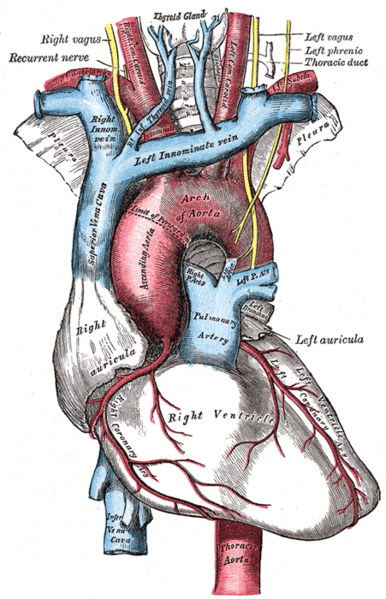 |
An SP tries to remain covered during an invasive exam.
[The Invasion via wikimedia] |
Acting (or at the very least, memorization) is an important component to being an SP. But also important is self-awareness and comfort for varying levels of exposure & contact during an encounter. Generally speaking, if you want to be an SP, there are three kinds of exams you could be a part of:
- Interview: the student doctor asks history questions, counseling, etc. but does not perform a physical exam.
- Physical: the student doctor examines one or more body systems using hands and/or tools. This may or may not involve wearing a gown.
- Invasive: primarily breasts, pelvic & rectal exams. These are paid at a higher rate than the first two categories (though the rate widely varies across the US).
Some schools are explicit in these designations, while others do not bother to distinguish between the first two categories.
But these categories are pretty broad. For true ethical transparency, I think the categories should be even more nuanced. For instance, some of the physical scenarios can be invasive and uncomfortably intimate for some SPs who are modest, rightfully nervous of pointy things in their ears, or easily triggered.
Here's how I would categorize SP jobs:
- History Interview: student doctors ask questions about the patient's chief compliant, medical history, family medical history and/or social history. Relatively straightforward, without major revelations.
- Psych interview: Any interview that includes a major social or emotional component, as these require such different affects, reactions and feedback. Different SPs find different kinds of psych encounters draining. Some find depression exhausting, while others find mania exhausting.
- Basic physical exam: the student doctor examines one or more visible body systems using hands, eyes and tools. Neuro exams and mental status exams would qualify, too.
- Mildly invasive physical exam: anything that involves ungowning instructions would probably qualify for this category. Exposing the abdomen or chest is a modesty issue for some SPs, so heart and lung exams can be uncomfortable for them. Exams that require the SP (or the student) to move breast tissue would be part of this category, as would attaching leads.
- Moderately invasive physical exam: I don't understand why there isn't more consideration and expectations management around HEENT exams, which involve sharp pointy cones in sensitive orifices like noses and ears. I know SPs who have been harmed in these exams. Eye exams, too, can qualify here, especially ones that involve students pulling on an SP's eyelids or pushing on the eyes in some way (neuro exams, looking for conjunctivitis, etc.). Checking for the liver and spleen can be pretty invasive & intimate depending on the school, as the student hooks his/her hands under an SP's ribs. And if a school wants students to check the inguinal nodes, SPs had better be aware of that and consent to it beforehand. Nobody wants a surprise inguinal exam.
- Majorly invasive physical exam: In addition to breast, pelvic, and rectal exams, I would include blood draws & biopsies in this category.
Additional components that may affect SP modesty during encounters:
- What is the level of undress required for each role even if the SP is in a gown? For instance: can the SP wear pants, or bike shorts? Can the SP wear tank tops or bras?
- Who will be observing? SPs may feel more or less comfortable in group encounters, with peer observers, with faculty observers in the room, with faculty observers outside the room, with staff observation, or with video review after the event.
Extra credit:
I once worked for a school that wanted women to remove their bras for the event since students would be performing heart/lung exams. The school didn't think it was fair for the students who had female SPs to have to struggle with this complication when students who had male SPs did not. This is generally not acceptable, but even worse is that this was mentioned on the day of the exam. What SP was going to refuse at that point? That felt disrespectful (and frankly, sexist).
Setting the standard:
I think having knowledge of these categories is an important tool for SPs to choose the kinds of jobs they are comfortable with, especially when first starting out. For every event, make it clear what is expected of the SP before the SP accepts the job. Do not penalize SPs for refusing jobs outside their comfort level.


.jpg)